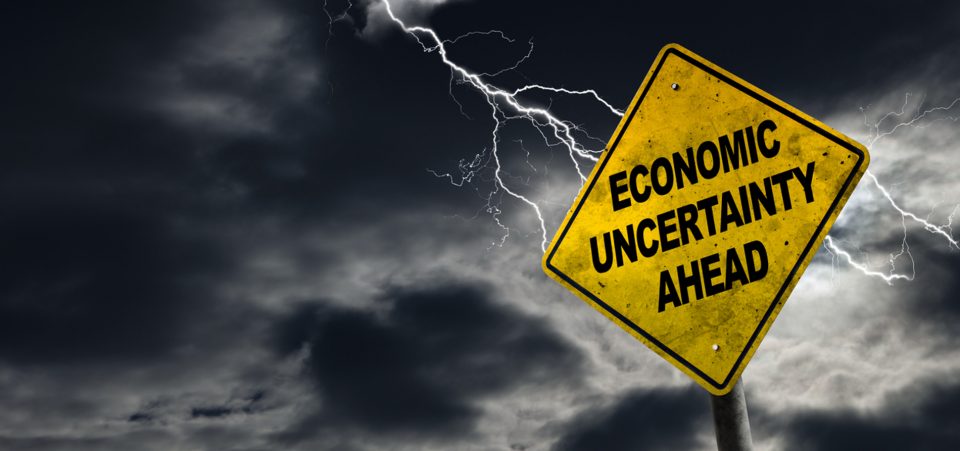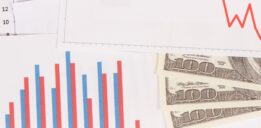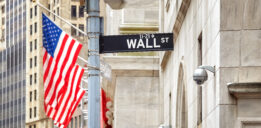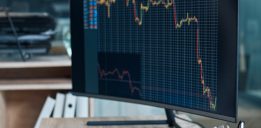Uncertainty That Could Cause an “Economic Crash 2017” Has Begun
There is a distinct possibility, if not an actual probability, that the world will soon have to analyze the causes of the Great Economic Crash 2017 or the Great Economic Crash 2018. The next two years are mired in financial uncertainty. Investors would be wise to review the general causes of economic depressions, recessions, and the Great Depression itself.
No economic depression, stock market crash, or economic collapse is exactly alike. But they share points in common which fall in one of two categories: exuberance or sociopolitical disruption. Those two factors have already stamped their marks on this year. That’s why no keen observer could simply dismiss the chance of an Economic Crash 2017.
The combination of factors is easy enough to identify, but analyzing the various aspects of an economic crash can take decades. For example, determining the causes of the Great Depression of 1929 continues to keep analysts as busy as understanding the causes of the Wall Street crash of 2007–2008.
If we had a complete understanding, we might better determine the chance of an economic crash 2017. But we don’t, because there are still contradictory positions. There are also different ways to interpret the causes of a stock market crash, especially one that leads to economic depression.
The more recent the crash, the more complex and intertwined the causes. The effects are always global and, if there’s any difference between 1929 and 2008, for example, it’s the speed of the domino effect. One of the keys to understanding the ever more complex system is that no market exists in risk isolation.
That means the current market includes a substantial amount of risk resulting from the social, political, economic, and financial interplay between the United States, the European Union (EU) and the big Asian economies, including the “Tigers.”
Trump Era Came Amid Fears and Biblical Fire-and-Brimstone Predictions
The gloomy outlook in the United States earlier in the year had more to do with the economy and the markets than with politics. Then, barely a few weeks into Donald Trump’s presidency, the Dow Jones was at record highs. But the risk of a total economic collapse and an implosion of the current world order seems almost inevitable.
Trump’s policies, mainly focusing on infrastructure investments, the recovery of the domestic economy, and tax relief for businesses, could yet have positive effects on the American economy. Economists expect gross domestic product (GDP) to exceed 2.2% in 2017. There are even those who believe that the United States can resume its role as the locomotive of the world economy.
It would certainly benefit from an accommodating monetary policy. But the market is not betting on this now. The U.S. Federal Reserve seems determined to increase the nominal interest rate. Shy of charging like a bull, last New Year’s Eve, a realistic trader could have expected an initial rate hike and a subsequent stabilization in the face of predictable but moderate growth.
But that was before Trump played his hand. The rest of 2017 promises to be a very interesting year, not only from the economic point of view, but—and most of all—from its political developments and repercussions. But how shall these political events influence the markets and financial investments? More significantly, how will these events spark a stock market crash of such proportions as to leave an economic collapse in its wake?
Bad Omen: 2017 Is the 100th Anniversary of the October Revolution
It’s a chance of timing that all the likely turmoil of 2017 comes on the centenary of the October Revolution of 1917 in Russia. That’s an anniversary like no other. Surely, the socialist forces of the world are preparing to remember it. They could not have asked for a better 2017 to mark the occasion.
To many liberals—and conservatives—Trump must appear like a veritable combination of Lenin and Czar! The centenary will take place in a world that, apart from the market euphoria, is still experiencing a profound socioeconomic crisis. Nobody has yet to show the solution and the possible ways out.
Part of the problem is that the media has masked the extent of the crisis. It’s more than simply economic; there are deep sociological effects. Indeed, the sheer value of wealth amassed through the markets defies the imagination. There are more billionaires than ever. But the disparity of wealth is equally flabbergasting.
It’s not even an issue of the fabled “one percent.” The entry fee to that club is an income of no less than $350,000/year in the United States. The one percent, however, is nothing compared to the 0.1%. (Source: “The .1 percent are the true villains: What Americans don’t understand about income inequality,” Salon, April 14, 2016.)
The 0.1% own as much wealth as the bottom 90% of America combined. These include some of the Silicon Valley tech CEOs and a few speculators (George Soros comes to mind) who have championed the anti-Trump cause so vociferously.
That’s a key to predicting just how disruptive the anti-Trump sentiment could become. A rough estimate of the 0.1% suggests that Trump has at least half of those billionaires against him. Therefore, they have plenty of funds to keep the opposition machine running. Trump will push his agenda, but he could end up like the captain of a ship that has lost its rudder.
The reason why Trump’s contested administration can affect the markets and prompt an economic crash is the unknown. Former U.S. defense secretary Donald Rumsfeld once attributed the difficulties of the Iraq war to the difference between the “known unknowns” and the “unknown unknowns.”
Many pundits made fun of the seemingly nonsensical statement, but Rumsfeld was brilliant in his description. There are risks you can expect and risks you never even considered. The Trump era has brought us the latter situation. Markets thrive in volatility, but markets don’t like uncertainty for long. Global economic growth has depended ever more on a stable America.
Trump Has Only Just Begun to Shake America
The U.S. political scene will play a key role in determining whether global growth will accelerate. Trump has proposed a mixed bag of policies; they are both pro-growth and anti-growth.
The fact that the president has started from day one trying to enact some of his more radical proposals has frightened the world. He launched a plan for a Mexican border wall, temporarily blocked immigration and travel from seven countries, put Iran “on notice,” stripped the United States’ participation in the proposed Trans-Pacific Partnership (TPP), and reversed over 15 years of hostile politics toward Russia in a matter of days.
Most recently, Trump released his goals for the North American Free Trade Agreement (NAFTA). The redesigned version will, if he gets his way, promote his “America First” brand. It’s open for debate, though, as to whether or not Mexico and Canada will play along. There’s a lot at stake; NAFTA has created a $19.0-trillion regional market with 470 million consumers. According to the U.S. Chamber of Commerce, six million U.S. jobs depend on trade with Mexico while another eight million U.S. jobs rely on trade with Canada.
It remains to be seen whether Trump proceeds with tax reform and reducing regulations. But the markets seem to believe him on that front.
But while investors like some of the policies, it’s unclear what effect they will have in the medium term. For example, Trump will, by choice, focus on restricting global trade and deporting illegal immigrants. Inevitably, this policy will catch up with basic economics, such that the economy will start slowing down. It may even enter a phase of recession.
Trump will essentially take America away from global pro-growth policies. These have sometimes helped counter the effects of misguided government policies. Now the U.S. will have to endure a bigger slice of the risk.
And what risk indeed. President Trump wants to lift or significantly revise the Dodd–Frank Wall Street Reform and Consumer Protection Act. This was a cornerstone of President Barack Obama’s mechanisms to reduce the risk of another Lehman Brothers Holdings Inc. collapse and economic depression. Trump has already announced steps to roll back the rules that have ostensibly reduced market risk, but reduced gains, since 2008. (Source: “Trump Moves to Roll Back Obama-Era Financial Regulations,” The New York Times, February 3, 2017.)
Apart from the risk, it’s telling that Trump is moving like a peregrine falcon on his prey with this policy, which benefits the one percent (or rather, the 0.1%). Trump appears to have forgotten the “forgotten man” of the campaign that earned him so many votes from less-privileged Americans.
The Dodd-Frank Act was one of the cornerstones of the Obama administration. Trump wants it gone, in order to revive the spirit of entrepreneurship, but it might prove a surprise that could catch all of us unprepared.
At first, there will be economic growth, but speculation-based growth produces surprises, not all of them good. Risky investments might appear to be safer than they are. Investors tend to see the risk of a stock as a potential deviation from the expected level of profits. They pay little attention to price, in the sense of the price-to-earnings (P/E) ratio.
Trump has other priorities; he has preferred the banks to the common man. But financial deregulation could produce veritable fireworks. The Dodd-Frank Act has limited the extent that banks can speculate. Soon, they will be back in the financial Wild West, reviving the conditions that led to the subprime collapse.







